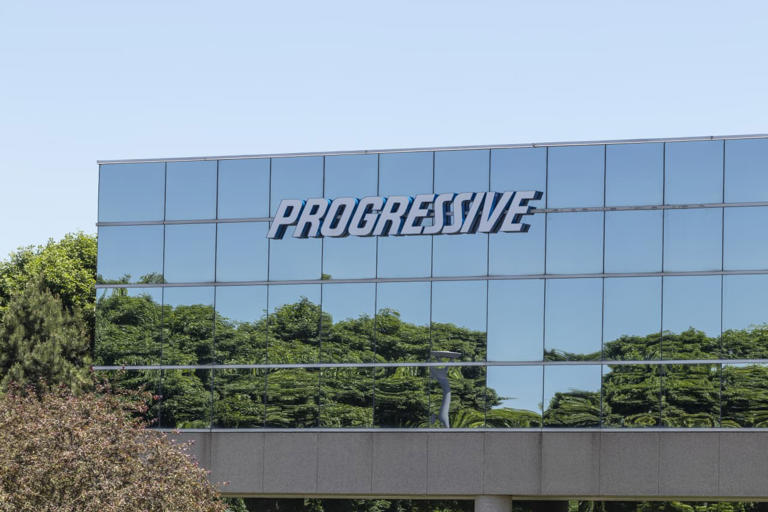It’s rare to find a stock that consistently outperforms the market while also being one of the least volatile in the S&P 500. But Progressive, a home-and-auto insurer, seems to fit that bill.
According to Josh Shanker, senior insurance analyst with BofA Securities, Progressive stands out as possibly the least volatile stock in the S&P 500 that still delivers impressive stock performance. While it’s hard to compete with Nvidia’s staggering compound annual growth rate (CAGR) of 69% over the past decade, Progressive’s 25%-26% CAGR places it in the top quintile of S&P 500 stocks valued at $100 billion or more.
What’s remarkable is Progressive’s low beta, a measure of volatility relative to an index, which sits at 0.67, placing it among the lowest quintile in terms of volatility. A beta below 1 indicates lower volatility compared to the market. Over the past year, Progressive has shown even lower daily volatility, with a trading beta of just 0.21.
Shanker, who maintains a Buy rating on the stock, has increased his price target to $261.00 from $256.00. Currently, Progressive’s shares are trading around $188.00. If not for Eli Lilly’s exceptional performance over the past year, Progressive might have been considered the most efficient stock in the S&P 500, offering the highest returns with the least volatility.
BofA highlights that the S&P 500 is currently trading at 18.9 times 2025 consensus earnings per share, while Progressive is trading at 17.7 times consensus figures. According to Shanker, this valuation for Progressive is 31% below what it should be and is likely to increase significantly.
Despite concerns from some quarters about Progressive’s shares being overvalued, BofA notes that they are trading within the historical range for both absolute and relative-to-market multiples.
BofA challenges the notion that paying 17.7 times 2025 consensus EPS for Progressive is excessive for several reasons. Firstly, this valuation isn’t historically high. Over various timeframes (1-year, 2-year, 3-year, 5-year, and 10-year), the average price-to-earnings multiples for Progressive have been 18.0x, 18.4x, 18.4x, 16.9x, and 16.1x, respectively.
Secondly, the broader market has seen an increase in valuations over time. Currently, Progressive’s price-to-earnings multiple is at 93% of the S&P 500’s multiple of 18.9 times. Looking at historical data, the average relative price-to-earnings multiples over various timeframes have been 100%, 107%, 101%, 94%, and 95%.
BofA further argues that consensus estimates for Progressive’s earnings are too conservative. Their high-end earnings per share forecast of $13.85 is 31% higher than the consensus estimate of $10.60.
“If the Street’s forecast were to align with ours, Progressive shares would be valued at 13.5 times 2025 EPS, representing 71% of the S&P 500’s P/E multiple,” BofA noted.
Moreover, BofA highlights the trend of increasing earnings forecasts for Progressive, with the Street’s estimates consistently rising. Since August 2023, consensus 2025 earnings projections have surged by 19%.
Additionally, BofA emphasizes that Progressive’s historical trading multiples have often underestimated its value. Despite the stock not appearing more expensive based on earnings valuation, investors should have been willing to pay higher multiples in the past, Shanker argues.
The strong compound annual growth rate (CAGR) of 25%-26% over the past decade indicates that historical multiples failed to accurately reflect the business’s true worth, according to BofA.
